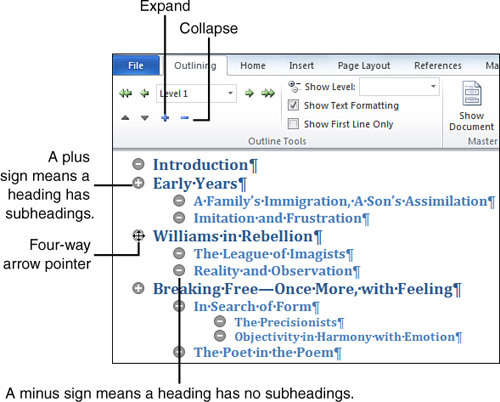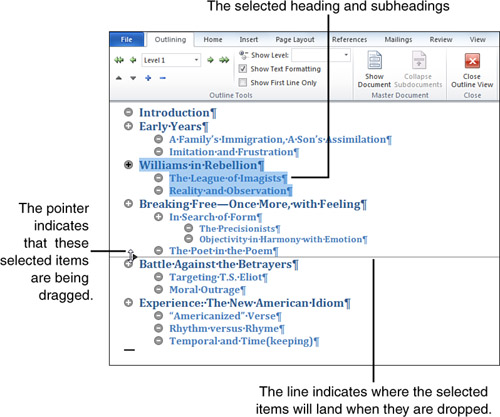Expanding and Collapsing Parts of an Outline
If a heading contains multiple subheadings, you can
“collapse” the main heading to hide the subheadings and create more
space on the screen. You can expand a collapsed heading to see its
subordinate headings again. Here’s how:
1. | Point
to the plus sign that appears before a heading that contains
subheadings. The pointer changes to a four-way arrow, as shown in Figure 5.

|
2. | Double-click
the plus sign to collapse the heading and hide its subheadings. A thick
line appears under the collapsed heading, indicating that it contains
hidden subheadings, as shown in Figure 6.

|
3. | To expand the collapsed heading, double-click its plus sign again.
|
You can also expand or collapse a section by clicking its heading and then clicking Expand or Collapse on the Outlining tab.
Reorganizing an Outline
In Outline view, you can reorganize an entire
document in seconds simply by rearranging its headings. You can move
headings around in the following ways:
- Click the icon
to the left of a heading to select it (and any subordinate headings
underneath it). Drag the icon up or down, and then drop it in the
desired position. As you drag, a black line indicates where the heading
will land when you drop it, as shown in Figure 7.

- Click a heading’s icon to select it (and its
subheadings, if any), and then click the Move Up or Move Down button on
the Outlining tab. The heading moves up or down one position each time
you click a button.
- To move a major heading but leave
its subordinate headings where they are, click the major heading (not
its icon) to place the insertion point in it. Then click the Move Up or
Move Down button.
If you’re going to move a heading that
contains subheadings, collapse the heading before selecting it. This
hides the subordinate headings so they don’t trip you up. Don’t worry;
when you move a heading, its subheadings move right along with it.